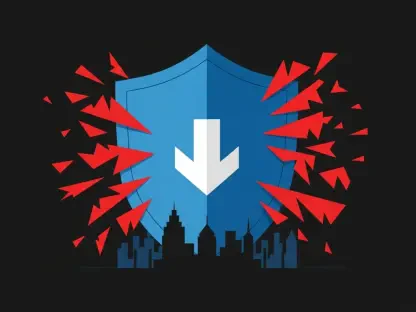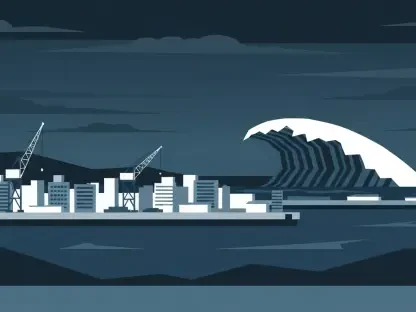The propane insurance market is navigating turbulent waters this year, presenting a stark reality for marketers across the United States who are wrestling with unprecedented challenges in securing coverage. A hardening landscape defined by shrinking insurer capacity, soaring premiums, and increasingly stringent underwriting standards has left many businesses in the LP gas industry struggling to find affordable protection. Insights gathered from leading insurance providers paint a vivid picture of a sector under strain, driven by a combination of internal industry dynamics and external pressures that are reshaping the risk environment. From commercial auto to umbrella policies, costs are climbing at an alarming rate, with some premiums spiking by as much as 25 percent. This financial burden, coupled with fewer insurers willing to engage with the propane sector, underscores the urgency for marketers to adapt to a rapidly evolving market. Yet, amidst the adversity, there are glimmers of hope for those willing to embrace proactive strategies, particularly in the realm of safety and risk management. As external forces like natural disasters and social inflation further complicate the landscape, the path forward demands resilience, strategic planning, and a keen understanding of emerging opportunities within this challenging insurance arena.
Navigating Financial Strain and Market Shifts
Escalating Costs and Limited Options
The financial pressures facing propane marketers are undeniable, with premiums for critical coverages such as commercial auto, general liability, property, and umbrella policies experiencing significant increases. Reports indicate that umbrella coverage, often a vital safety net for businesses, has seen rate hikes ranging from 15 to 25 percent, creating a substantial burden for companies already operating on tight margins. This surge in costs is largely attributed to a tightening reinsurance market, where insurers themselves face higher expenses and reduced capacity to underwrite risks. As a result, propane businesses are finding fewer carriers willing to offer competitive terms, pushing many to scramble for alternative solutions or accept steep price increases just to maintain essential protection. The ripple effect of this hardening market is felt across operations, forcing marketers to reevaluate budgets and prioritize expenditures in ways that were unimaginable just a few years ago.
Beyond the immediate sting of higher premiums, the shrinking pool of insurers compounds the challenge, as consolidation within the insurance industry has led to fewer players with the expertise or appetite for propane-specific risks. This scarcity of options means that even businesses with strong track records are not immune to the financial strain, as carriers pull back from the sector or impose stricter criteria for coverage. The situation is particularly dire for smaller marketers who lack the negotiating power of larger firms, often leaving them at the mercy of a limited market with little room for flexibility. This dynamic underscores the need for strategic foresight, as propane companies must now explore every avenue—whether through alternative risk programs or partnerships—to secure the coverage necessary to operate without breaking the bank.
External Pressures Driving Loss Costs
Adding to the financial woes are external factors that are beyond the control of individual propane marketers yet profoundly impact the insurance landscape. Natural disasters, with their increasing frequency and severity, are straining property insurance capacity, as carriers grapple with higher claims payouts and the rising cost of rebuilding in affected areas. Social inflation, characterized by escalating litigation costs and larger jury awards, is another significant driver, particularly in liability lines where verdicts can reach staggering figures. These trends create a volatile environment where loss costs are climbing, forcing insurers to pass on the burden through higher premiums or reduced coverage offerings for propane businesses.
Moreover, the broader energy sector, including propane, is not immune to geopolitical tensions and emerging cyber threats that introduce additional layers of uncertainty. Instabilities in global markets can disrupt supply chains or impact fuel pricing, indirectly affecting the risk profiles of propane marketers. Cyber risks, meanwhile, are becoming a pressing concern as digital operations expand, with potential breaches posing both financial and reputational threats that insurers must account for in their pricing models. These external forces highlight the interconnected nature of modern risks, where events far removed from a marketer’s daily operations can still have a direct bearing on insurance costs and availability, necessitating a more comprehensive approach to risk assessment and mitigation.
Underwriting Rigor and Compliance Demands
Heightened Scrutiny from Insurers
Underwriters are adopting a far more rigorous stance in the current propane insurance market, placing unprecedented emphasis on detailed documentation and strict adherence to operational standards. Carriers are now scrutinizing every aspect of a business’s practices, from vehicle maintenance logs to employee training records, as a prerequisite for offering or renewing coverage. This intensified focus often extends beyond standard regulatory requirements, with some insurers setting benchmarks that challenge even the most diligent propane marketers. The message is clear: only those who can demonstrate meticulous compliance and operational excellence will secure favorable terms, while others risk facing higher rates or outright policy denials.
This shift in underwriting philosophy reflects a broader industry trend toward risk aversion, as insurers seek to minimize exposure in a market plagued by rising loss costs. For propane businesses, this means that maintaining coverage is no longer just about paying premiums but about proving a commitment to safety and regulatory alignment at every turn. The burden of proof lies squarely with the marketer, who must invest time and resources into ensuring that every operational detail meets or exceeds carrier expectations. Failure to keep pace with these evolving standards can result in significant disruptions, making it imperative for companies to stay ahead of underwriting trends and prioritize internal processes that align with insurer demands.
Repercussions of Falling Short
The consequences of failing to meet these stringent underwriting criteria can be severe, often leading to policy cancellations or renewal terms that are financially unfeasible for many propane marketers. When documentation is incomplete or safety protocols are deemed inadequate, insurers may view a business as too high-risk, opting to withdraw coverage altogether or impose punitive rate increases that strain already tight budgets. This reality creates a precarious situation where even a single oversight can jeopardize a company’s ability to operate, as gaps in insurance protection expose marketers to significant financial and legal vulnerabilities.
Beyond the immediate impact of losing coverage, non-compliance can tarnish a business’s reputation with insurers, making it harder to secure affordable options in the future. Carriers often share information about risk profiles, meaning that a history of lapses can follow a company, further limiting access to competitive markets. This long-term effect underscores the critical need for propane marketers to treat compliance not as a box to check but as a foundational element of their operational strategy. Investing in robust internal systems and regular audits can help mitigate these risks, ensuring that businesses remain insurable even as underwriting standards continue to tighten across the industry.
Safety as a Cornerstone for Success
Building a Culture of Risk Mitigation
Safety has emerged as a pivotal factor in navigating the hardened propane insurance market, with carriers placing immense value on risk management practices that reduce the likelihood of claims. Insurers are increasingly rewarding companies that demonstrate a strong commitment to safety through comprehensive programs that include regular defensive driving training, strict adherence to maintenance schedules, and ongoing employee education on best practices. Businesses with clean claims histories and proactive approaches to minimizing hazards often find themselves in a stronger position to negotiate better premiums or secure coverage when options are scarce, highlighting safety as a tangible competitive advantage.
This emphasis on risk mitigation extends to fostering a culture where safety is ingrained in every aspect of operations, from delivery routes to customer interactions. Propane marketers who prioritize these efforts not only reduce the potential for costly incidents but also build trust with insurers who view such dedication as a marker of lower risk. The benefits are twofold: fewer accidents translate to fewer claims, while a strong safety record signals to carriers that a business is a reliable partner. As the market continues to harden, embedding safety into the core of a company’s ethos becomes less of an option and more of a necessity for sustaining long-term insurability and financial stability.
Harnessing Technology for Safety Gains
Technology is playing an increasingly vital role in bolstering safety initiatives, offering propane marketers tools to enhance risk management and strengthen their standing with insurers. Innovations such as dash cameras, GPS tracking systems, and telematics provide real-time data on driver behavior and vehicle performance, enabling companies to address potential issues before they escalate into accidents or claims. Automated tank gauges, meanwhile, help monitor fuel levels and prevent overfills, reducing the risk of spills or environmental incidents that could trigger costly insurance payouts. Carriers often view the adoption of such technologies favorably, as they provide verifiable evidence of a business’s commitment to safety.
The strategic use of these tools goes beyond mere compliance, offering propane businesses a way to differentiate themselves in a crowded and competitive market. For instance, footage from dash cameras can serve as critical documentation in defending against unfounded liability claims, potentially saving thousands in legal and settlement costs. Similarly, telematics data can inform targeted training programs that address specific driver weaknesses, further minimizing risks. By integrating technology into their safety frameworks, marketers not only improve operational efficiency but also position themselves as forward-thinking partners in the eyes of insurers, often unlocking access to more competitive pricing or broader coverage options in a challenging landscape.
Adapting to New Risks and Industry Trends
Expanding Coverage for Emerging Threats
As the risk landscape evolves, propane marketers are finding that traditional insurance policies no longer suffice to address the full spectrum of exposures they face, and environmental liability, cyber risks, and pollution coverage have become critical components of a comprehensive insurance portfolio. These needs are driven by tightening regulations and the growing complexity of operational hazards. Cyber threats, in particular, are a rising concern as businesses increasingly rely on digital systems for everything from customer transactions to logistics, making them vulnerable to breaches that can result in significant financial and reputational damage. Insurers are responding by emphasizing the need for specialized policies that protect against these modern challenges.
This shift toward broader coverage reflects a recognition that the propane industry operates in an interconnected and dynamic environment where new risks can emerge without warning. Environmental regulations, for example, are becoming more stringent, holding marketers accountable for spills or emissions that could have long-lasting consequences. Similarly, the potential for cyberattacks to disrupt operations or compromise sensitive data necessitates robust protection that goes beyond standard liability lines. Propane businesses must work closely with insurers to tailor their policies to these evolving needs, ensuring they are not caught off guard by exposures that could derail their operations or finances in an already tough market.
Responding to Sector Consolidation
Industry consolidation is reshaping the propane insurance market, with fewer carriers willing to take on the specialized risks associated with LP gas operations. This trend, driven by mergers and acquisitions within both the propane and insurance sectors, has reduced the pool of providers with the expertise to underwrite policies tailored to marketers’ unique needs. As a result, businesses are often left competing for attention from a limited number of insurers, which can drive up costs and restrict access to comprehensive coverage. Finding carriers who understand the intricacies of propane operations is becoming a critical challenge in maintaining adequate protection.
The impact of consolidation extends beyond mere availability, influencing the types of coverage and terms offered to propane marketers. With fewer players in the market, insurers can afford to be more selective, often prioritizing larger firms or those with impeccable risk profiles while smaller operators struggle to secure favorable deals. This disparity highlights the importance of building strategic relationships with specialized carriers who can offer customized solutions despite the shrinking market. Propane businesses must also consider alternative risk transfer mechanisms, such as captives or risk retention groups, to fill gaps left by traditional insurers, ensuring they remain protected in an environment where options are increasingly limited.
Finding Pathways Through Market Challenges
Capitalizing on Carrier Flexibility
Despite the overarching challenges of a hardening market, certain propane marketers are discovering opportunities through carriers who offer flexibility to businesses demonstrating strong risk controls. Insurers are showing a willingness to negotiate better terms or pricing for companies that can prove their dedication to safety and operational excellence through documented programs and clean claims histories. This trend suggests that proactive efforts in risk management can yield tangible benefits, even in a landscape where premiums are generally on the rise and options are dwindling. Marketers who invest in these areas often find themselves better positioned to weather the financial storm.
This flexibility from carriers is not universal but tends to favor businesses that stand out as low-risk partners in a high-risk industry. For instance, a propane company with a robust safety training regimen and advanced technology in place may secure a renewal at a more manageable rate compared to competitors who lack such measures. This disparity creates an incentive for marketers to double down on internal improvements, viewing them not just as compliance necessities but as strategic tools for gaining a competitive edge. By aligning with insurers who value these efforts, propane businesses can carve out a niche of stability, mitigating some of the broader market pressures that affect the sector as a whole.
Utilizing Industry Networks and Resources
Tapping into industry networks and resources offers another viable path for propane marketers seeking to navigate the current insurance challenges. Joining state or regional propane associations provides access to valuable training programs, best practices, and collective bargaining power that can help secure better coverage options or pricing. These organizations often facilitate connections with insurers who specialize in the sector, fostering partnerships that might otherwise be out of reach for individual businesses. Additionally, associations can offer insights into emerging risks and regulatory changes, keeping members ahead of the curve in a rapidly shifting market.
Beyond associations, exploring alternative risk programs such as captives or group purchasing arrangements can provide a buffer against the limitations of the traditional insurance market. These mechanisms allow propane marketers to pool resources and share risks with peers, potentially reducing costs and increasing access to tailored coverage. Such collaborative approaches are particularly beneficial for smaller operators who may struggle to attract attention from major carriers on their own. By leveraging these industry resources, businesses can build resilience against the hardening market, ensuring they have the tools and support needed to adapt to ongoing challenges while maintaining operational continuity in a competitive field.
Charting a Sustainable Future
Reflecting on the state of the propane insurance market, it’s evident that the hurdles faced by marketers were met with a blend of resilience and strategic adaptation, highlighting their determination to navigate tough conditions. The steep rise in premiums, coupled with reduced insurer capacity, tested the resolve of many businesses, yet those who prioritized safety and compliance often found ways to secure more favorable outcomes. External pressures, from natural disasters to social inflation, added layers of complexity, but they also underscored the importance of comprehensive coverage that addressed both traditional and emerging risks. The insights shared by industry experts painted a clear picture of a sector in flux, where challenges abounded but were not insurmountable for those willing to evolve. Moving forward, propane marketers should focus on strengthening relationships with specialized carriers, investing in technology to enhance safety, and actively engaging with industry associations to access shared resources. These actionable steps, built on the lessons of the past, offer a roadmap for stability, empowering businesses to not just survive but thrive amidst the ongoing hardening of the insurance landscape.









